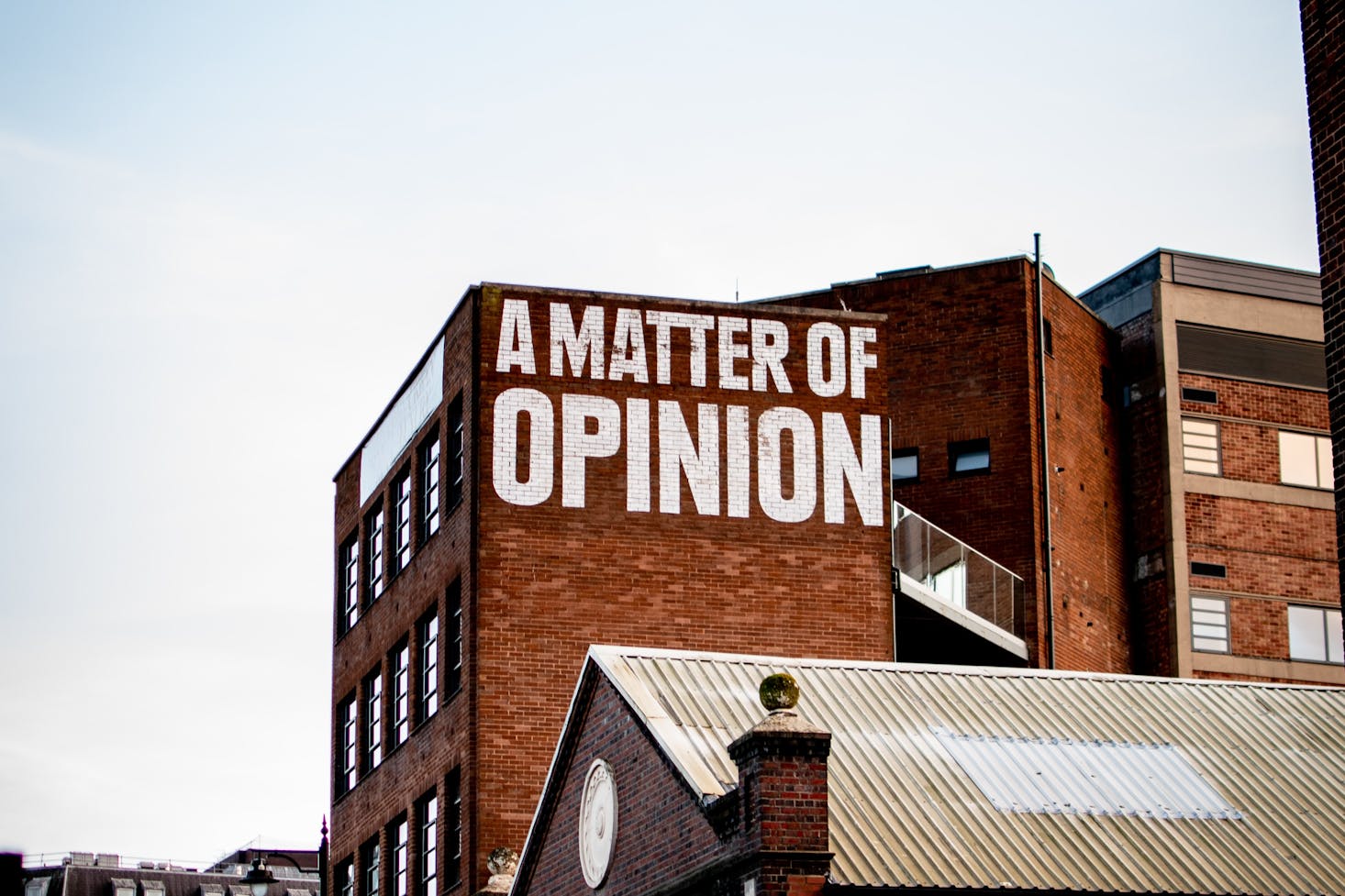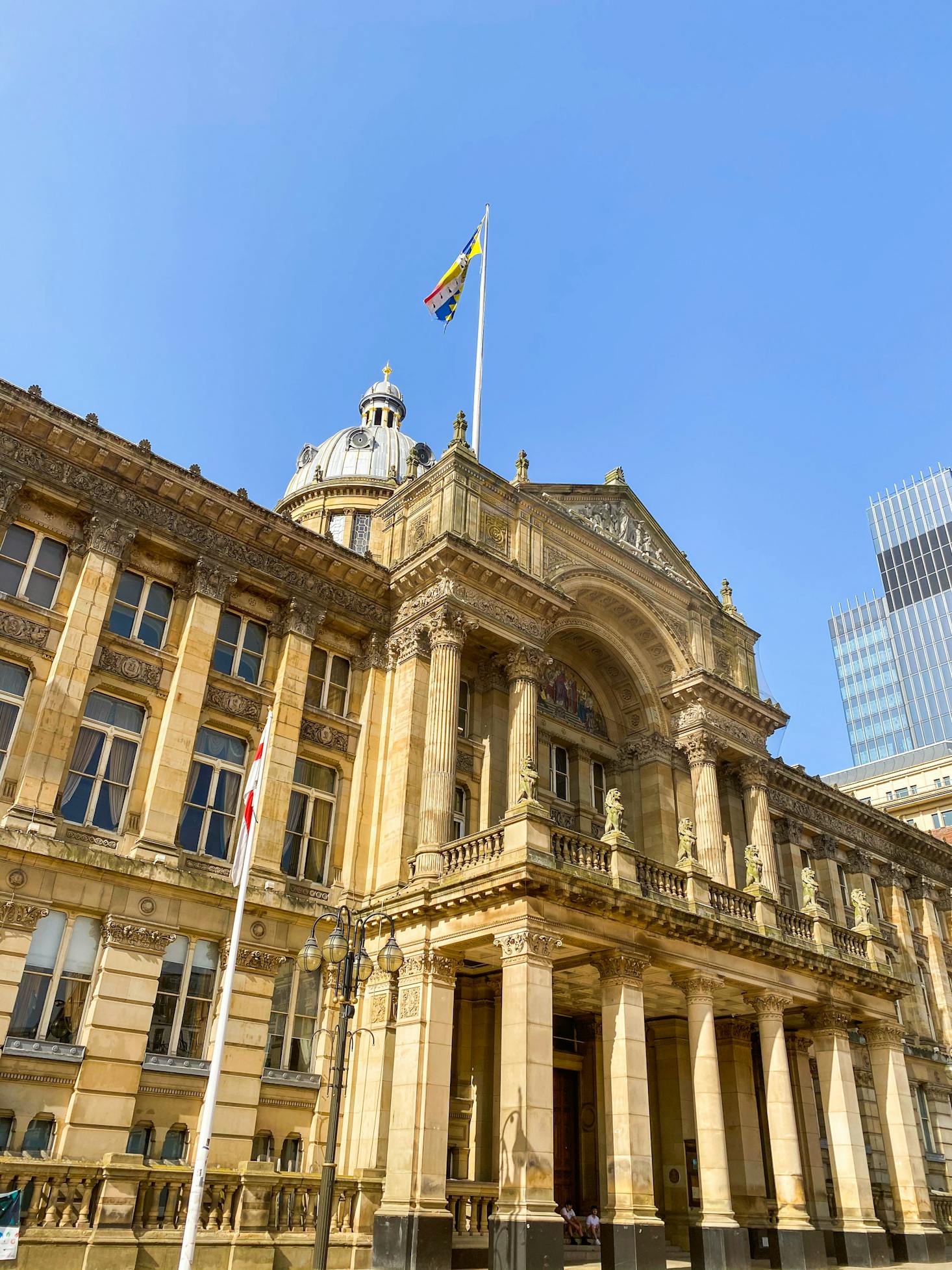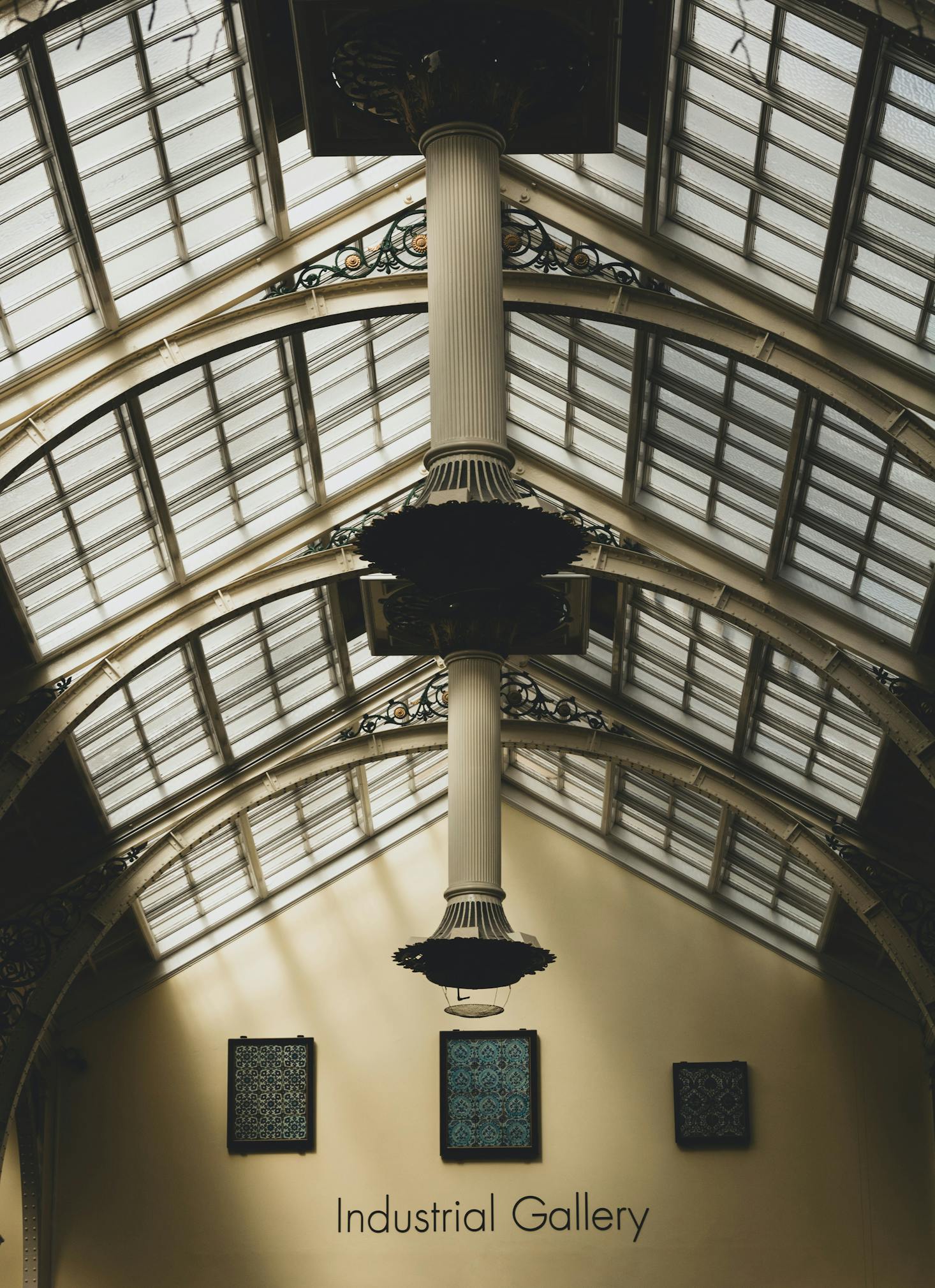The 12 Best Museums In Birmingham

Located in the West Midlands right in the center of England, Birmingham is a major metropolis in the second largest city in the UK. That would come as a surprise to anybody who lived in Birmingham before the Industrial Revolution when the city was a fairly minor village. But when Britain began to industrialize, Birmingham soon became a major center of industry and grew to be one of the biggest and most important cities in the entire country, a position it retains today.
So while Birmingham may not have the ancient history of cities like London, Edinburgh, or Colchester, the history it does have is rich and important. Plus, you'd expect a city the size of Birmingham to have some top museums and cultural institutions, and it does. The best museums in Birmingham will give you a crash course in the history of the city and of the country, expose you to fine art from around the world, or dive deep into specialist subjects you may never have considered before.
From the moment you arrive at Birmingham Airport or New Street Train Station, you'll be able to explore the cultural heritage of the city. Just don't forget to drop off your bags at a Bounce luggage storage in Birmingham so that you will be able to explore more easily. With hundreds of locations around the world, including Birmingham, Bounce makes sure you never have to carry more than you need to.
Get $5 off with the Bounce app
Use Bounce to find nearby bag storage in 4,000+ cities worldwide.
Get the app

Birmingham Museum and Art Gallery
The biggest and grandest art gallery and museum in the city, Birmingham Museum has to be the first port of call for any museum-loving visitor to the city. Even the building the museum is housed in, a grade 2 listed historical structure, is impressive. But Birmingham Museum, originally opened in 1885, holds a huge collection that touches on almost every aspect of culture from around the world.
You'll find fine art by Botticelli, Canaletto, Rubens, and Constable, among others, making this one of the finest art museums in the country. You'll also find archaeology displays illuminating the ancient history of the Midlands, and natural history exhibits showcase the flora and fauna of the area. Plus, the permanent exhibit of local and industrial history explains how Birmingham became such an important city.
Perhaps best of all, the Birmingham Museum and Art Gallery is completely free to visit, making it one of the best free things to do in Birmingham. If you care about art or history even a little bit, or you just want an interesting place to go on a rainy day, this is one you shouldn't miss.
National Motorcycle Museum
Birmingham, and the broader West Midlands region of which it is the capital, were instrumental in the early development of motor vehicles. This area was the home of British automotive engineering, and many of the world's top car brands, such as Jaguar and Landrover, were born in this area.
For that reason, Birmingham is home to the largest motorcycle museum in the country. The National Motorcycle Museum boasts more than 850 bikes that span more than a century of manufacture. And while the largest British motorcycle museum is an obvious place to visit for committed gearheads, this specialized museum is more interesting than you might expect for casual visitors, too. Check out some of the world's most valuable motorbikes and admire the engineering and craftsmanship that went into making these iconic vehicles, and you'll come away with a new appreciation for engineering.
Plus, this is another of the many great Birmingham museums that is completely free to visit. What do you have to lose?
Thinktank Birmingham Science Museum
Birmingham museums cover a wide range of subject matter, but visiting a museum can be a tough sell for kids, even on a rainy day. However, Thinktank Science Museum is not only one of the best Birmingham museums for kids, but one of the best things to do with kids in the entire city.
This family-friendly science museum has over 300 hands-on exhibits that make it a fantastic place to bring the family. Don't miss the Spitfire Gallery, where you can admire the iconic fighter planes that protected Britain from Nazi invasion during World War II. You can also check out the only surviving tram in Birmingham, an impressive collection of steam engines, an interactive display on the human body, and a natural history display that includes dinosaur fossils. The museum regularly hosts family activities, and also contains a Kid's City play area and an outdoor Science Garden. In short, this is probably the best of all Birmingham museums to visit with the family, and adults as well as kids will learn something new and be entertained by these interactive exhibits.
Museum of the Jewellery Quarter
Birmingham's famous Jewellery Quarter showcases the city's past as the Workshop of the World, and remains both an important area of jewelry manufacturing in the city center and one of the most fascinating neighborhoods in the city. The manufacture of gold in this area goes back to at least the 16th century, but it was in the 18th and 19th centuries that this center for jewelry making really came into its own. Although British jewelry manufacture has declined from that industrial heyday, Birmingham's Jewellery Quarter still produces 40% of all jewelry made in the UK each year, and remains one of Europe's top jewelry making regions. Therefore, it's a great place to go shopping if you have the budget. And since the area has become a major tourist attraction, it's also a great place to find the best street food in Birmingham.
You can learn more about the rich history of the area at the former Smith and Pepper jewelry manufacturing firm. This preserved jewelry workshop turned museum allows visitors to see live demonstrations of jewelry making and exhibits on the history of jewelry manufacture in the city. There's also a tearoom where you can get refreshments and, of course, a gift shop where you can pick up work by local designers.

Soho House
Birmingham's history is dominated by its industrial past. But there is more to the city's heritage than factories and canals, and you can experience other facets of this heritage at stately Soho House. Built around 1750, this home was once the meeting place of the Lunar Society who met regularly to discuss the latest scientific findings. It was also the home of famous industrialist Matthew Boulton. Now, this impressive mansion is a museum that lets visitors glimpse how Britain's newly rich industrial class both mimicked and developed the style and taste of the old aristocracy. Soho House also contains exhibits on jewelry and even a small collection of fossils.
Birmingham's Coffin Works
For a more unusual take on the industrial past, visit this coffin workshop turned museum in the heart of the city. Formerly the Newman Brothers Coffin Furniture Factory, this facility operated from 1894 to 1998, creating caskets and coffins to bury Birmingham's dead. During its operation, Newman Brothers furnished the coffins of some famous Britons like George V, Winston Churchill, and Princess Diana. Guided tours of the former factory illuminate the lives of the workers and give you a glimpse into Birmingham's industrial past from this unusual angle. Opened in 2014, this is one of Birmingham's newest history museums and a welcome addition to the city's cultural landscape.
Barber Institute of Fine Arts
Both an art gallery and a venue for performing arts, the Barber Institute of Fine Arts is located on the campus of the University of Birmingham. The Institute boasts a solid European art collection including works by Monet, Van Gogh, Magritte, and Degas, and the collection also contains decorative art, sculptures, drawings, and a huge rare coin collection. Although it's a little off the beaten path, the Barber Institute is well worth visiting for fans of fine art, and you might also get to catch a show in the attached theater while you're there. Plus, like many of the other great museums in Birmingham, this one is totally free to visit.
Blakesley Hall
Birmingham's historic sites may lean toward the Industrial Revolution, but that's not universally true. If you want to peer a little further back in time, the historic Tudor house of Blakesley Hall is one of the oldest buildings in the city and a relic of a time when Birmingham was far more agricultural than it is today.
Built in 1590, Blakesley Hall preserves the classic Tudor architecture of exposed wooden beams, and wandering through this preserved house can feel almost like taking a trip back in time. You'll learn more about the lives of both the nobility of Tudor England and the people who served them, making this a fascinating place to explore a different side of Birmingham.
Lapworth Museum
Run by the University of Birmingham, the Lapworth Museum of Geology contains more than 250,000 specimens of rocks, gems, and fossils. The exhibits here go back millions of years and explain more about the natural history of the region, long before Birmingham became what it is today. The Lapworth Museum is something of a hidden gem, but earns its place among the best museums in Birmingham with an impressive specialist collection that will delight anyone with an interest in geology or paleontology. Plus, it's free to visit.
Aston Hall
Undoubtedly one of the grandest of Birmingham's old houses, Aston Hall dates back to 1635 and is a classic example of Jacobean architecture. Built by Sir Thomas Holte, the hall hosted famous visitors like King Charles I, and the partial damage it received during the English Civil War can still be seen to this day. Many of the rooms have been restored to the way they would have looked during the heyday of this impressive house, giving a glimpse of what life was like in a turbulent period of English history. For what it's worth, Aston Hall is also reputed to be one of the most haunted locations in the UK.

Birmingham Back-to-Backs
For a completely different take on the history of Birmingham, visit the National Trust Birmingham Back-to-Backs. Back-to-Backs were the houses where Birmingham's working class lived while working in the factories and foundries of the Industrial Revolution, and this collection of houses around a central courtyard is the last remaining example of this once-common type of housing. Inside, you'll see what life was like for Birmingham's 19th century working class, making this one of the most unique and interesting museums in Birmingham for fans of social history.
Pen Museum
Birmingham excels at museums based around specialist interests, and the Pen Museum is no different. Britain's premier museum dedicated to writing instruments, the Pen Museum is located in the Jewellery Quarter and occupies a grade 2 listed landmark building that used to be a pen factory. As well as detailing the evolution of the pen, this quirky museum offers hands-on activities where you can try different pens through history and even make your own pen nib.
What are the best free museums in Birmingham?
Birmingham, like many UK cities, is blessed with an enviable selection of museums that are totally free to visit. Foremost among these is the stunning Birmingham Museum and Art Gallery. But if that's not enough, you can also visit the Barber Institute, the National Motorcycle Museum, and the Lapworth Museum without spending a penny.
Which are the best museums in downtown Birmingham?
The Birmingham Museum and Art Gallery is the most central of all museums in Birmingham, occupying a place right in the city center. A short walk away, you'll also find the interactive science museum of Thinktank. Plus, a stroll in the other direction will bring you to the Jewellery Quarter and some of Birmingham's more quirky museums.
Are there any cheap museums in Birmingham?
Since so many of Birmingham's museums are completely free to visit, you can get all the art and culture you want without spending a penny. But even among the museums that charge admission, there are bargains to be found. The Pen Museum costs only £7 to visit, and the £9.50 it costs to visit the Birmingham Back-to-Backs includes a guided tour.
Conclusion
Birmingham's history may be shorter than many other UK cities, but that doesn't make it any less interesting. Drop off your bags at Bounce and visit some of Birmingham's top history museums, and you'll see just how varied and interesting the history of this industrial city is.
Get $5 off with the Bounce app
Use Bounce to find nearby bag storage in 4,000+ cities worldwide.
Get the app
